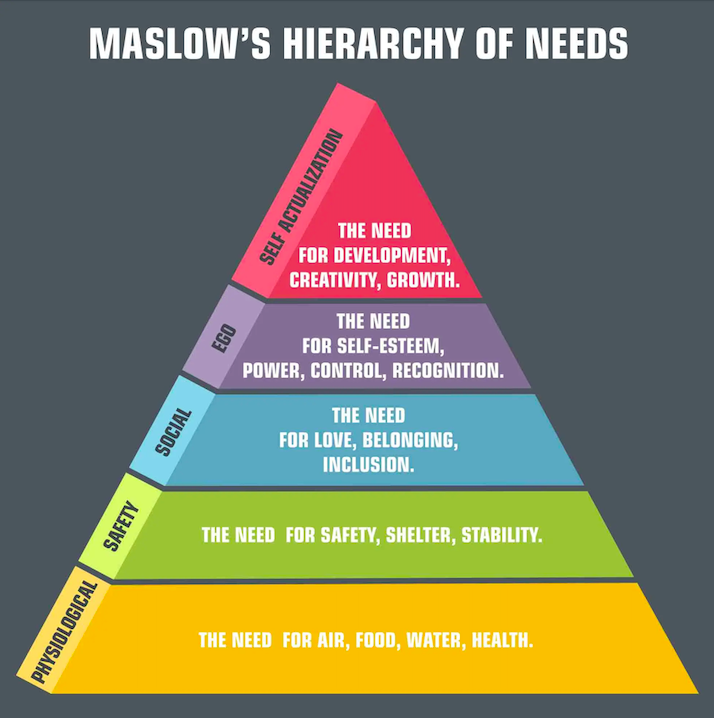‘Being human profoundly means to be open to the world, a world, that is, which is replete with other beings to encounter and with meanings to fulfil…’
Frankl (1966), Self-transcendence as a human phenomenon. Journal of Humanistic Psychology, 6, 97–106: 97.

This museum entry offers an introduction to peace and transcendence. It is the first of a three-part series on the subject which developed from my reflections on where I find peace in my own life. Through this introspection, I realised that I find peace both in the awe-inspiring – grand natural vistas and feats of human cooperation – and in the mundane – those everyday moments where one becomes suddenly conscious of one’s surroundings. Both of these phenomena can be seen as examples of transcendence, when the sense of self fades away and you are suddenly aware of a connection to something bigger, be it spiritual, natural, or social. This first entry will deal with self-transcendence in a general sense, while my two follow-on pieces will focus on the awe-inspiring and the mundane respectively.
Transcendence is an ‘ego-dissolving encounter’, argues Simon Dein.[1] Nevertheless, it is a also profoundly personal experience; what works for one person might not necessarily work for another. For me, transcendence can be found in looking out over a stormy sea; or a soul-warming soup when I’ve been feeling low. Self-transcendence means moving beyond the limitations of your own perspective, albeit briefly, and in doing connecting to those around you and the physical and spiritual worlds you inhabit. In moving beyond these limitations, one can begin to recognise one’s own capabilities and place. By breaking down the boundaries of the ego, the self, there is the possibility to connect more fundamentally with others (to be more prosocial[2]) and with the cosmos as a whole. It is this connectedness with society and one’s surroundings that makes self-transcendence so profoundly relevant for visualising peace. Ultimately, peace is felt in our relationships with other people, and/or in relationships between people and their environment.

How might you square this with aspects of inner peace that involve being at ease with/within oneself? (Letting go of all the ‘I should do x, y and z now’ kind of worries, self-forgiveness for mistakes, etc…) Abraham Maslow, the pre-eminent American psychologist responsible for his famous Hierarchy of Needs, recognised the importance of self-transcendence later in life, going so far as to begin reformulating his hierarchy to add self-transcendence to the top of the pyramid, which was never fully realised due to his death in 1970. Maslaw saw self-transcendence in terms of “peak experiences” ; in other words, the most wonderful experiences in life that are characterised by awe, wonder and excitement. These experiences are part of Maslow’s category of self-actualisation, but in actualising the self, through personal growth and development, one is able to self-transcend these individual goals and reach another level of contentment (or peace) above self-actualisation. As he explained them, peak experiences leave you feeling simultaneously powerful and helpless at the same time, lost in your perceptions of time and space. Maslow felt that seeing self-actualisation as the pinnacle of our needs was a globally Western way of looking at the world, a focus on the individual, and looked instead to spiritual philosophies such as Buddhism and one’s connection with their surroundings.
The remaining items in this series will explore the connections between self-transcendence and peace further, but it is already apparent that there are important connections to be made between the two. Transcendence is linked both to a sense of inner peace and the opportunity of communal peace, in going beyond individual wants and needs.
What do you think?
- What experiences in your life help you transcend your normal concerns, worries and sense of self?
- Do you think that these experiences can make you feel more peaceful within yourself? Do they help you to feel more peaceful towards others around you? How long do these feelings tend to last? And what does that tell us about the need to keep renewing inner peace – or the value of regular self-transcendence?
- Do you think Maslow was right to amend his Hierarchy of Needs to place self-transcendence at the top, or does the peak of human experience lie in personal growth and development?
- Is there a risk with self-transcendence that it evokes a sense of peace through disconnection with concerns as well as connections with other people/our natural environment? How might we square this with the slow labour of peace-building, often in touch circumstances?
If you enjoyed this item in our museum…
You might also enjoy The Inner Peace of Mary Oliver’s Poetry, Place is the Path to Peace, Pockets of Peace in St Andrews, Mindful Peace with Haemin Sunim, Om Shanti, Peace through Movement, and other items with the tag ‘inner peace‘.
Joe Walker, April 2023
[1] Dein, Simon. 2020. “Transcendence, religion and social bonding.” Archive for the Psychology of Religion 42 (1):77-88. doi: 10.1177/0084672420905018.
[2] ibid